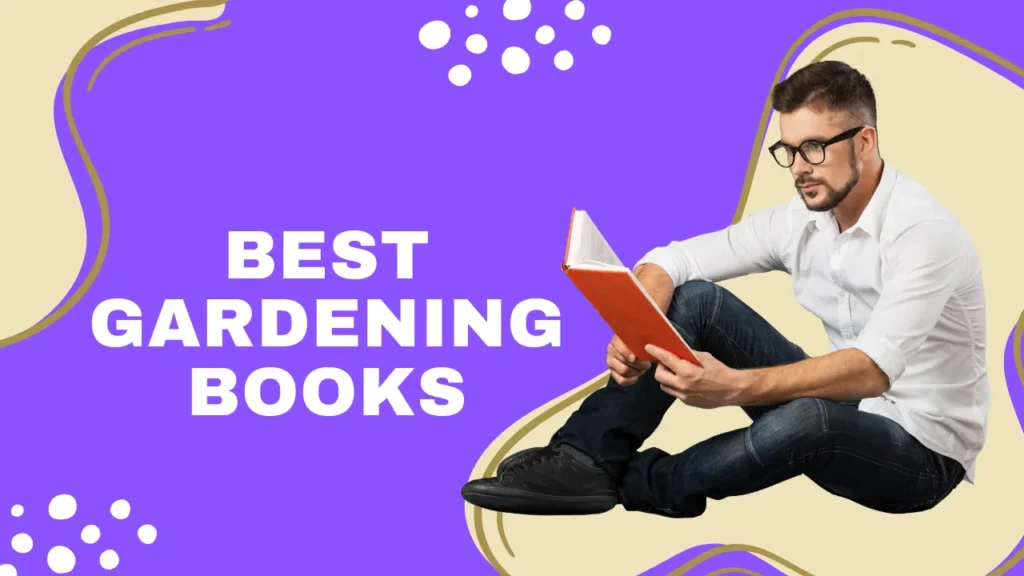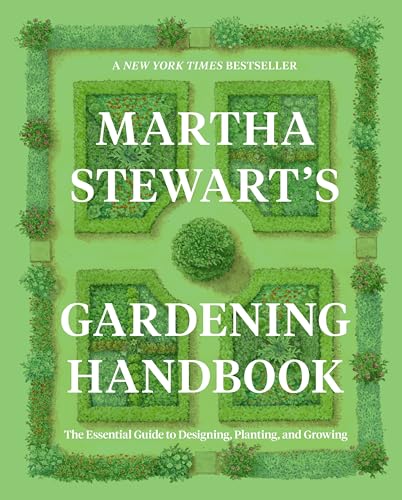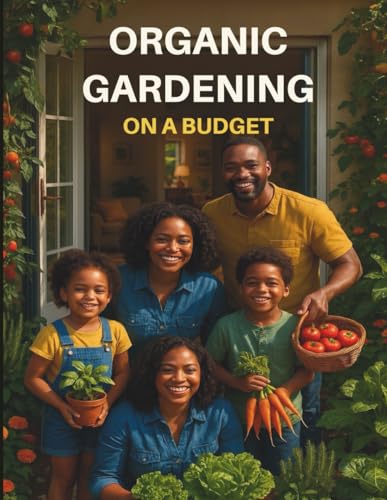Introduction: Cultivating Knowledge for Gardening Success
Embarking on a gardening journey can be both an exciting and daunting prospect for many individuals. It is essential to recognize that a successful garden is not merely a consequence of planting seeds; it is the product of informed decision-making and a solid understanding of various gardening principles. Reading extensively on gardening is a pivotal step that every aspiring gardener must undertake to ensure that their endeavors flourish.
The intricacies of gardening encompass a wide array of subjects, from understanding soil types and climate conditions to selecting appropriate plants and mastering pest control strategies. Each plant species has its unique requirements for light, water, and nutrition. For example, certain vegetables thrive in well-drained soil, while others might require more moisture. This understanding is crucial for preventing common mistakes that novices often make, such as overwatering or planting in inappropriate locations. By reading about these fundamentals, new gardeners can enhance their skills and create a thriving green space.

Moreover, knowledge gained through books and reputable resources can empower gardeners to make informed decisions that directly impact the growth and health of their plants. Awareness of seasonal cycles, plant diseases, and the benefits of companion planting can yield substantial results, allowing individuals to cultivate a garden that not only survives but excels. Reading is not just a passive activity; it actively engages the mind and prepares the gardener for the practical challenges ahead.
In summary, investing time in reading about gardening lays a strong foundation for anyone eager to embark on this fulfilling journey. By arming themselves with knowledge, new gardeners will be equipped to navigate the complexities of horticulture with confidence and competence.
Understanding Your Local Environment
Before embarking on a gardening journey, it is imperative to have a comprehensive understanding of your local environment. This encompasses various factors such as climate, soil types, and prevalent pests. Each of these elements plays a crucial role in determining which plants will thrive in a specific area. The local climate affects not only the growth cycle of plants but also their overall health and vitality. By familiarizing yourself with the climate zones in your region, you can select plants that are better suited to endure local weather patterns.
Soil characteristics are another vital aspect to consider. Different regions have varying soil compositions, which can significantly influence plant development. For instance, sandy soil drains quickly but may lack the nutrients needed for certain plants, whereas clay soil retains moisture but can become compacted. Accessing local gardening books or guides can provide valuable insights into the types of soil found in your area. These resources often include recommendations for soil amendments and planting techniques tailored to enhance soil quality, thus improving the gardening experience.
Pests and diseases are inevitable components of any gardening endeavor and can vary widely from one locale to another. Understanding which pests are common in your region allows you to develop effective management strategies. Local gardening resources often highlight the most frequent pests, their lifecycle, and effective control methods that align with environmentally friendly practices. By equipping yourself with this knowledge through reading and research, you will be better prepared to respond proactively to challenges, thereby fostering a thriving garden.
Incorporating insights from local gardening literature significantly contributes to the overall success of your gardening efforts. By understanding your local environment, selecting the right plants, and implementing well-informed strategies, you can drastically improve your gardening outcomes. This foundational knowledge not only enhances your skills as a gardener but also enriches your appreciation for the natural ecosystem of your region.
Choosing the Right Plants for Your Garden
Choosing the right plants for your garden is a critical step that can significantly influence the success of your gardening endeavors. It is essential to consider various factors such as plant hardiness zones, sun exposure, and the compatibility of different species. By educating yourself through reading, both about specific plants and general gardening practices, you can make informed decisions that will enhance your gardening experience.
Firstly, understanding hardiness zones is crucial when selecting plants. These zones indicate the minimum temperatures a plant can withstand, guiding gardeners in identifying which species are most likely to survive in their local climate. A well-researched gardener will refer to maps and charts that illustrate the hardiness zones in their area. This knowledge can prevent the frustration of planting species that may perish during extreme weather conditions.
Sunlight is another vital consideration. Different plants have varying requirements for sunlight; some thrive in full sun, while others prefer partial shade. By reading up on specific plant needs, gardeners can group plants with similar light requirements, leading to healthier growth and a more visually appealing garden layout. This thoughtful planning facilitates a harmonious garden environment and reduces competition for light, which can hinder the growth of certain plants.
Additionally, compatibility among various plants can influence their overall health and resilience. Certain plants can benefit one another through processes such as companion planting, where some species help deter pests or improve soil quality for their neighbors. Knowledge about which plants work well together can streamline your gardening efforts and create a flourishing ecosystem in your garden.
In summary, dedicating time to read and research before you begin planting is invaluable. This knowledge not only aids in selecting appropriate annuals, perennials, vegetables, and fruits but also sets the foundation for a thriving garden that can withstand the challenges posed by the environment and competing plant species.
Soil Preparation and Fertility Management
The quality of soil is paramount in determining the success of any gardening endeavor. A well-prepared and fertile soil serves as the foundation for healthy plant growth, providing essential nutrients, water retention, and proper aeration. Before embarking on your gardening journey, it is crucial to understand the various soil types, their characteristics, and how they influence plant health. This is where the invaluable insights found in gardening literature come into play.
Books on gardening often delve into different soil types, such as sandy, clay, silt, and loamy soils, each having unique properties that affect drainage, nutrient availability, and root development. For instance, sandy soils tend to drain quickly but may lack nutrients, whereas clay soils can retain moisture but may become compacted and impede root growth. Learning about these distinctions through authoritative resources helps in selecting the appropriate soil type for specific plants, ensuring optimum growth conditions.
Moreover, soil preparation techniques are extensively covered in gardening texts. These guides often recommend methods such as tilling, adding organic matter, and implementing crop rotation to enhance soil structure and fertility. The incorporation of compost or well-rotted manure not only improves texture but also infuses the soil with crucial nutrients. Understanding how to amend soil fertility can significantly impact plant health and yield, as it promotes a thriving ecosystem in which beneficial microorganisms can flourish.
Incorporating knowledge from literature allows aspiring gardeners to approach soil preparation with confidence and clarity. With proper understanding and management of soil quality, gardeners can establish a robust growing environment, paving the way for a fruitful gardening experience. An informed start in soil preparation and fertility management is essential for any successful gardening journey, ultimately leading to healthier plants and a bountiful harvest.
Watering Techniques and Irrigation Practices
Water management is a fundamental aspect of gardening that significantly influences plant health and crop yield. Understanding various watering techniques and irrigation systems enables gardeners to create effective routines tailored to their garden’s specific needs. It is essential to recognize that both overwatering and underwatering are common mistakes made by novice gardeners, often leading to detrimental effects on plant growth.
One effective watering technique is the use of drip irrigation systems. This method involves delivering water directly to the roots of plants, minimizing evaporation and runoff. By reading up on drip irrigation practices, gardeners can ensure that their plants receive adequate moisture without the risk of waterlogging the soil. Drip irrigation not only conserves water but also promotes healthier root development, which is essential for the plant’s overall growth.
Another important practice is to understand the concept of soil moisture retention. Different soil types retain water differently; thus, familiarizing oneself with the properties of the soil can help determine the appropriate watering frequency and amount. For instance, sandy soils drain quickly and may require more frequent watering, while clay soils retain moisture for longer periods, necessitating less frequent irrigation. By researching these discrepancies, gardeners can establish a watering schedule that aligns with their garden’s requirements.
Alongside techniques, learning about rainwater harvesting presents an eco-friendly approach to irrigation. Utilizing rain barrels to collect runoff can provide a sustainable water source, reducing reliance on municipal supplies. This practice not only helps in conserving water but also reduces expenses, contributing to a healthier garden environment.
In conclusion, delving into water management and irrigation practices is indispensable for gardeners embarking on their journey. By equipping themselves with this knowledge, they can avoid common pitfalls associated with improper watering and create a thriving garden.
Pest and Disease Identification
One of the most critical skills for any aspiring gardener is the ability to identify pests and diseases that can threaten the health of plants. Early detection is paramount, as it enables gardeners to take immediate action to mitigate potential damage. Reading extensively about common garden pests and diseases equips new gardeners with the knowledge necessary to recognize signs of trouble before it escalates into a more significant problem. Educational materials, such as gardening books and guides featuring detailed illustrations and descriptions, can serve as invaluable resources in this crucial learning process.
Gardening literature often contains visual aids to help identify specific pests, such as aphids, spider mites, and whiteflies. In addition, numerous publications provide insights into various plant diseases, including fungal infections, bacterial spot, and root rot. Each resource incorporates helpful images alongside descriptions, allowing novices to familiarize themselves with what to look for in their garden. Understanding the signs and symptoms of these issues not only aids in prompt identification but also assists in determining the most effective management strategies.
Utilizing guides that cover pest and disease management can further enhance a gardener’s approach. Information on organic and chemical treatment options, together with preventive measures, can provide new gardeners with the tools they need to protect their plants. Moreover, comprehending the lifecycle of pests can contribute to strategic interventions that minimize their impact. As one advances through their gardening journey, reading about these topics reinforces the foundation of knowledge necessary for sustainable gardening practices, ensuring a more thriving, resilient garden.
Sustainable Practices and Organic Gardening
Sustainable gardening practices are essential for promoting ecological balance and ensuring the health of our environment. As gardening gains popularity, many aspiring gardeners are turning to organic gardening methods to reduce their environmental footprint while growing their own food and beautifying their surroundings. Reading credible literature on the subject can significantly inform this journey, providing valuable insights into eco-friendly methods, native plant selection, and effective integrated pest management techniques.
One of the primary advantages of opting for organic gardening is the avoidance of synthetic fertilizers and pesticides, which can have detrimental effects on soil health and biodiversity. Books dedicated to sustainable practices often highlight the significance of building healthy soil through composting and the use of organic amendments. By understanding the composting process and the importance of soil organisms, gardeners can enhance soil fertility sustainably. This knowledge empowers them to create a thriving ecosystem within their gardens, supporting both plant growth and local wildlife.
Additionally, selecting native plants in one’s garden is a critical step toward sustainability. Native plants are adapted to local climates and soils, requiring less water and maintenance than non-native species. Reading about indigenous flora can inform gardeners about the benefits of these plants, including providing habitat for pollinators and other beneficial organisms. This practice not only supports local ecosystems but also fosters the resilience of gardens against pests and diseases.
Integrated pest management is another crucial aspect of sustainable gardening, promoting a holistic approach to controlling pests. Books on this topic can educate gardeners about recognizing beneficial insects, implementing natural deterrents, and utilizing crop rotation to mitigate pest issues. By integrating these strategies into their gardening practices, individuals can cultivate an environment that minimizes the need for harmful chemical interventions, creating a healthier garden for themselves and the surrounding community.
Learning from Experienced Gardeners
Embarking on a gardening journey can be both exciting and daunting, especially for new gardeners. However, one of the most valuable resources available is the knowledge imparted by experienced gardeners. By learning from their insights through books, memoirs, and comprehensive guides, novices can significantly enhance their understanding and approach to gardening.
Books written by seasoned gardeners often encapsulate years of experiences, providing pragmatic advice and strategies that have been tested over time. These texts not only cover the basics of planting and maintenance but delve into specific challenges and solutions, enabling readers to anticipate potential obstacles in their gardening endeavors. Many seasoned gardeners also share personal anecdotes, making the reading experience relatable and inspiring. Stories of trials and successes can motivate new gardeners to remain resilient and adaptable in the face of difficulty.
Moreover, memoirs written by adept gardeners often reveal the emotional aspects of gardening—how the act of nurturing plants can serve as therapy and a source of joy. Such reflections illuminate the personal growth that gardening can foster, encouraging individuals to engage deeply with their gardening journey. The lessons learned from both success and failure presented in these memoirs are crucial, providing a framework through which new gardeners can learn to manage their expectations and celebrate small victories along the way.
Additionally, written guides offer structured advice specific to various types of gardening—be it organic, hydroponic, or traditional. These resources can direct novices towards understanding their specific climate, soil type, and the unique flora that thrive in their region. Embracing the accumulated wisdom of experienced gardeners can serve as a foundational component of a successful gardening journey, equipping newcomers with the insight needed for fruitful endeavors.
Conclusion: The Rewarding Journey of Knowledge and Growth
Embarking on a gardening journey is an enriching experience that can yield both beauty and sustenance. However, the significance of reading before you begin cannot be overstated. Engaging with literature on gardening cultivates a strong foundational knowledge that empowers aspiring gardeners to make informed decisions throughout their gardening endeavors. Books on horticulture provide insights into plant care, pest management, soil health, and the seasonal needs of different species, ultimately enhancing the chances of success.
Moreover, reading contributes to a gardener’s confidence. As individuals acquire understanding and familiarity with various techniques and strategies, they become more adept at troubleshooting issues that may arise in their gardens. This readiness can transform potential frustrations into manageable challenges, fostering a more enjoyable gardening experience. Knowledge gleaned from reading also facilitates creativity, allowing gardeners to experiment with diverse plant combinations and innovative gardening methods.
Additionally, the act of reading serves as a stepping stone for continuous growth, both literally and metaphorically. Each book can introduce new perspectives, inspiring individuals to try out progressive practices such as companion planting or organic gardening. As challenges are faced and overcome through the application of learned knowledge, the rewards of a thriving garden become even more fulfilling.
In light of these benefits, it is clear that reading should be regarded as an essential tool in the gardening toolkit. For anyone eager to embark on this rewarding journey, taking the time to read and absorb the wisdom of experienced gardeners is invaluable. Starting now will prepare you for future success, transforming your initial gardening dreams into a flourishing reality. Take a step forward; your garden awaits.





Leave a Reply